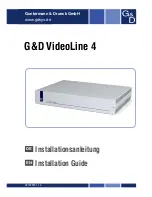
31
Using the Flash
Bas
ic Ph
otography an
d Pl
ayba
ck
: A
u
to
Mod
e
B
Shooting When the Flash is Disabled (
W
) or Lighting is Poor
•
Use of a tripod is recommended to stabilize the camera during shooting and avoid the effects of
camera shake. Set
Vibration reduction
(
126) to
Off
in setup menu (
117) when using a
tripod to stabilize the camera during shooting.
•
The
E
indicator is displayed when the camera automatically increases sensitivity. Pictures taken
when
E
is displayed may be slightly mottled.
B
Notes on the Flash
•
When using the flash, reflections from dust particles in the air may appear as bright spots in
pictures. To reduce these reflections, set the flash to
W
(off).
•
There may be functions with which the flash cannot be enabled. See “Camera Settings that
Cannot Be Applied Simultaneously” (
110) for more information.
C
The Flash Lamp
The flash lamp indicates flash status when the shutter-
release button is pressed halfway.
•
On: Flash will fire when picture is taken.
•
Blinks: Flash charging. Wait a few seconds and try again.
•
Off: Flash will not fire when picture is taken.
If the battery is low, the monitor display will turn off, and
remain off, until the flash is fully charged.
C
The Flash Mode Setting
The default flash mode setting varies with shooting mode.
•
A
(auto):
U
(auto)
•
Scene: varies with the selected scene mode (
•
F
(smart portrait): fixed at
W
(off) when
On
is selected for
Blink proof
;
U
(auto) when
Off
is
selected for
Blink proof
•
s
(subject tracking):
U
(auto)
The flash mode setting applied in
A
(auto) mode is stored in the camera’s memory even after the
camera is turned off, and reapplied the next time
A
(auto) mode is selected.
C
Red-eye Reduction
This camera uses advanced red-eye reduction (“In-Camera Red-Eye Fix”). The flash fires several times
at low intensity (pre-flash) before the main flash, reducing “red eye.” The camera then analyzes the
picture; if red-eye is detected, the affected area will be processed to further reduce red-eye before
the picture is saved. Please note the followings.
•
There is a slight lag between the shutter-release button being pressed and the picture being shot
because of the pre-flash. This mode is not recommended when a quick shutter response is
required.
•
The time before the next picture can be taken increases slightly.
•
Advanced red-eye reduction may not produce the desired results in all situations.
•
In extremely rare instances, areas not subject to red-eye may be affected by advanced red-eye
reduction processing; in these cases, choose another mode and try again.
Summary of Contents for COOLPIX S1000pj
Page 183: ......
















































